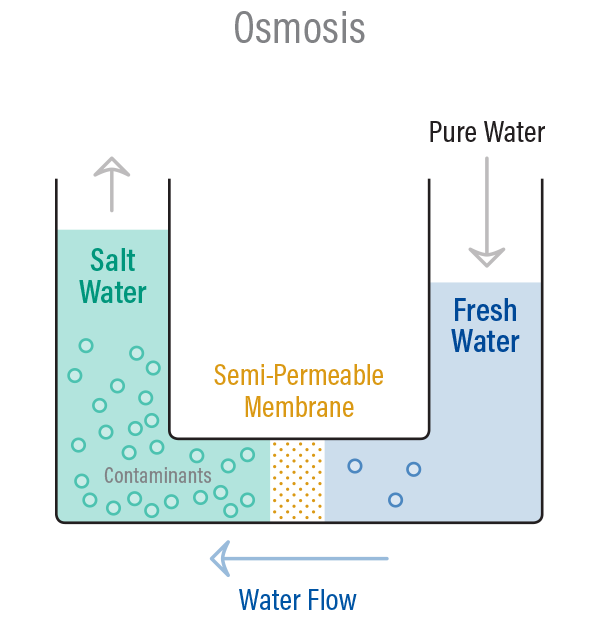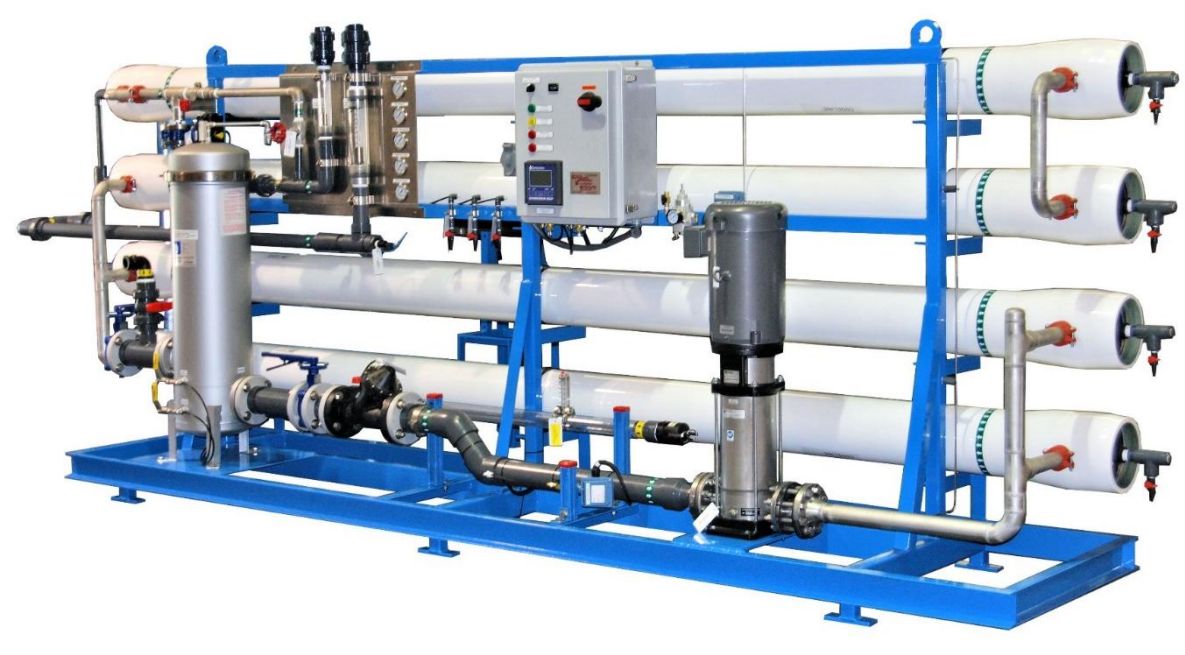Reverse osmosis system allows you to get delicious water, in which the dissolved gases are stored, but there are no various impurities. The key component is a semipermeable membrane, which allows you to purify water by 99%, from almost all impurities. Due to its characteristics, this membrane passes only water molecules through itself, everything else is retained by the filter. These are organic and inorganic compounds, heavy metals, bacteria and viruses. No filter can be compared with a reverse osmosis system by the method of water purification. It does not just become soft, even scum is removed. Therefore, if the task is to solve the problem of water hardness, then the reverse osmosis system installation cost is not a big deal.
Reverse Osmosis Filter Operation
The system is connected directly to the water supply, so its activity involves several stages:
- Pre-cleaning water.
- Cleaning with a membrane.
- Collection in a separate container.
- Water supply to a specially installed faucet.
- All the garbage that is delayed by the filter goes down to the sewer system. The device will work until the cumulative capacity is filled, after which the water supply stops. Today, such a system should be in every kitchen, taking into account the environmental situation.
The system purifies water from:
- Soluble salts, as a result, it becomes soft.
- Organic matter and microorganisms that adversely affect human health.
- Colloidal particles.
- Any other mechanical impurities.
The reverse osmosis system is a multi-stage water purification system, where the main filter element is a reverse osmosis membrane. Three stages of preliminary water purification are used to remove most of the contaminants in water and to protect the reverse osmosis membrane from premature clogging.

Stage 1 – foamed polypropylene fiber (PP) cartridge. Cleans water from undissolved, suspended particles in water, such as: sand, rust, clay, chalk, scale, and insoluble chemical compounds larger than 5 microns.
Stage 2 – cartridge granulated activated coconut carbon (GAC). Purification of water from chlorine and organochlorine compounds with the help of granules of activated carbon, thanks to the large surface of contact between coal and water, water purification is most effective.
Stage 3 – cartridge briquetted activated coconut carbon (HUNDRED). Carries out additional purification of water from chlorine and organochlorine compounds, eliminates 98% of free chlorine from water. By itself, serves as a filter cleaning 5mkm.
Stage 4 – reverse osmosis membrane. The unique technology of reverse osmosis membrane allows you to remove from water up to 99% of possible contamination. The diameter of the membrane cells is not more than 0.0001 microns. Bacteria and viruses would have had the opportunity to pass through the membrane if the first had collapsed in the ratio of 1/4000 and the last 1/200. Therefore, neither the smallest particles, nor foreign substances dissolved in water, bacteria and viruses can penetrate the highly sensitive membrane.
The 5th step is a post-filter made from activated coconut charcoal. The membrane breaks complex compounds in water into simpler ones, resulting in the formation of gases. The post-filter serves as a gas outlet, removes odors from the water and gives it a fresh taste. The water after the reverse osmosis membrane is saturated with oxygen, has an excellent taste and beneficial properties.
The 6th stage is a mineralizer, which includes such components as: zeolite, diatomaceous earth, oxidized aluminum, activated carbon from coconut shell. The mineralizer enriches purified water with ions of calcium, magnesium, potassium, sodium, iron, zinc, selenium, strontium and other elements, which not only improves the taste of water, but also makes it biologically more valuable.











